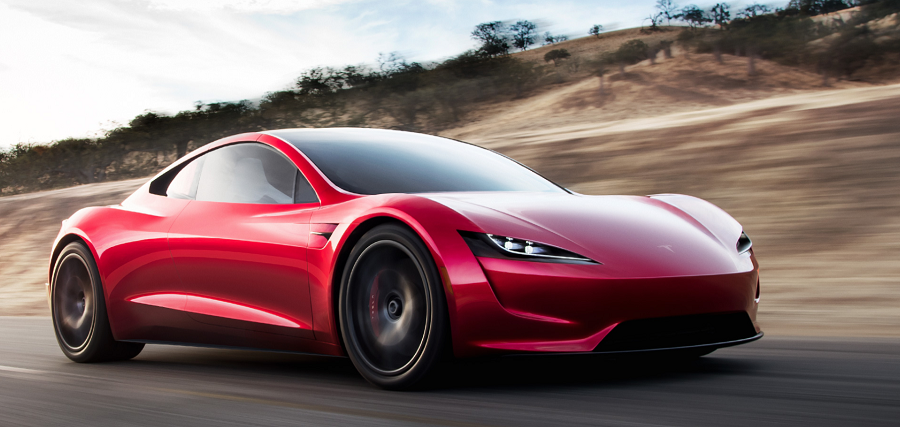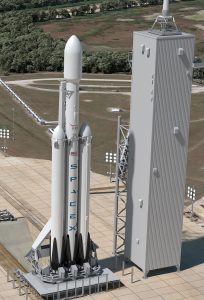
Elon Musk used Twitter to announce that the precious cargo onboard the inaugural Falcon Heavy rocket will be a Tesla Roadster. And if that alone wasn’t enough for the showman, Musk Tweeted, “Payload will be my midnight cherry Tesla Roadster playing Space Oddity. Destination is Mars orbit. Will be in deep space for a billion years or so if it doesn’t blow up on ascent.” The odd payload for the first launch attempt isn’t without precedent: the secret payload of the first Dragon flight was a giant wheel of cheese. Musk said that the cheesy cargo was “inspired by a friend & Monty Python.” Musk Tweeted, “I love the thought of a car drifting apparently endlessly through space and perhaps being discovered by an alien race millions of years in the future.”

The Falcon Heavy is a reusable super heavy-lift launch vehicle being designed and manufacturerd by Musk’s SpaceX. The Falcon Heavy, previously known as the Falcon 9 Heavy, is a variant of the existing Falcon 9 launch vehicle. It consists of a strengthened Falcon 9 rocket core with two additional Falcon 9 first stages as strap-on boosters. Currently, the Falcon 9 is used to carry various objects into space, ranging from communication satellites to the Dragon cargo craft that resupplies the International Space Station. Falcon Heavy was designed from the outset to carry humans into space and would enable crewed missions to the Moon or Mars.
While SpaceX has had great success with the Falcon9 rocket, there is some doubt about the performance of the unproven Falcon Heavy. Even Musk has expressed doubt, suggesting it could “blow up on ascent.” Musk expressed his concern to NASA International Space Station program manager Kirk Shireman. “I hope it makes it far enough away from the pad that it does not cause pad damage. I would consider even that a win, to be honest.” Musk added, “Major pucker factor, really; that’s, like, the only way to describe it.” Musk says that the engineering behind the new rocket was extensive, and given how much of the machine the team hasn’t been able to test in the lab, that a failure, crash, or explosion is likely. He promises that no matter what, the first mission will be “exciting.”
That “exciting” launch was to happen before the end of the year. An issue with another top-secret launch from the launch pad the Falcon Heavy intends to use has pushed those plans into January. SpaceX has yet to unveil a specific launch date for Falcon Heavy. A SpaceX Falcon 9 rocket will launch the 15th Dragon spacecraft mission on its 13th operational cargo delivery flight to the International Space Station on/around December 13, but that launch will occur on a different pad at NASA’s Kennedy Space Center. A SpaceX Falcon 9 rocket will also launch 10 satellites for the Iridium mobile communications fleet on December 22 or 23, but that launch will occur at Vandenberg Air Force Base in California.
After a successful launch and performance data reviewed and used to tweak subsequent launches, Falcon Heavy will eventually be put into service. Falcon Heavy will be the first vehicle since the Saturn V capable of carrying an astronaut to the Moon or even Mars.
Earlier this year, SpaceX announced that a Falcon Heavy rocket would send two paying passengers into space aboard one of the company’s Dragon spacecraft. The two private citizens, who have not yet been named, approached SpaceX about taking a trip around the moon, and have “already paid a significant deposit” for the cost of the mission, according to a statement from the company. The two passengers will be the only people on board what is expected to be about a weeklong trip around the moon, according to Musk, who spoke with reporters during a phone conference after the announcement was made. “This would be a long loop around the moon … It would skim the surface of the moon, go quite a bit further out into deep space and then loop back to Earth,” Musk said during the teleconference. “So I’m guessing, distance-wise, maybe 300,000 or 400,000 miles.”